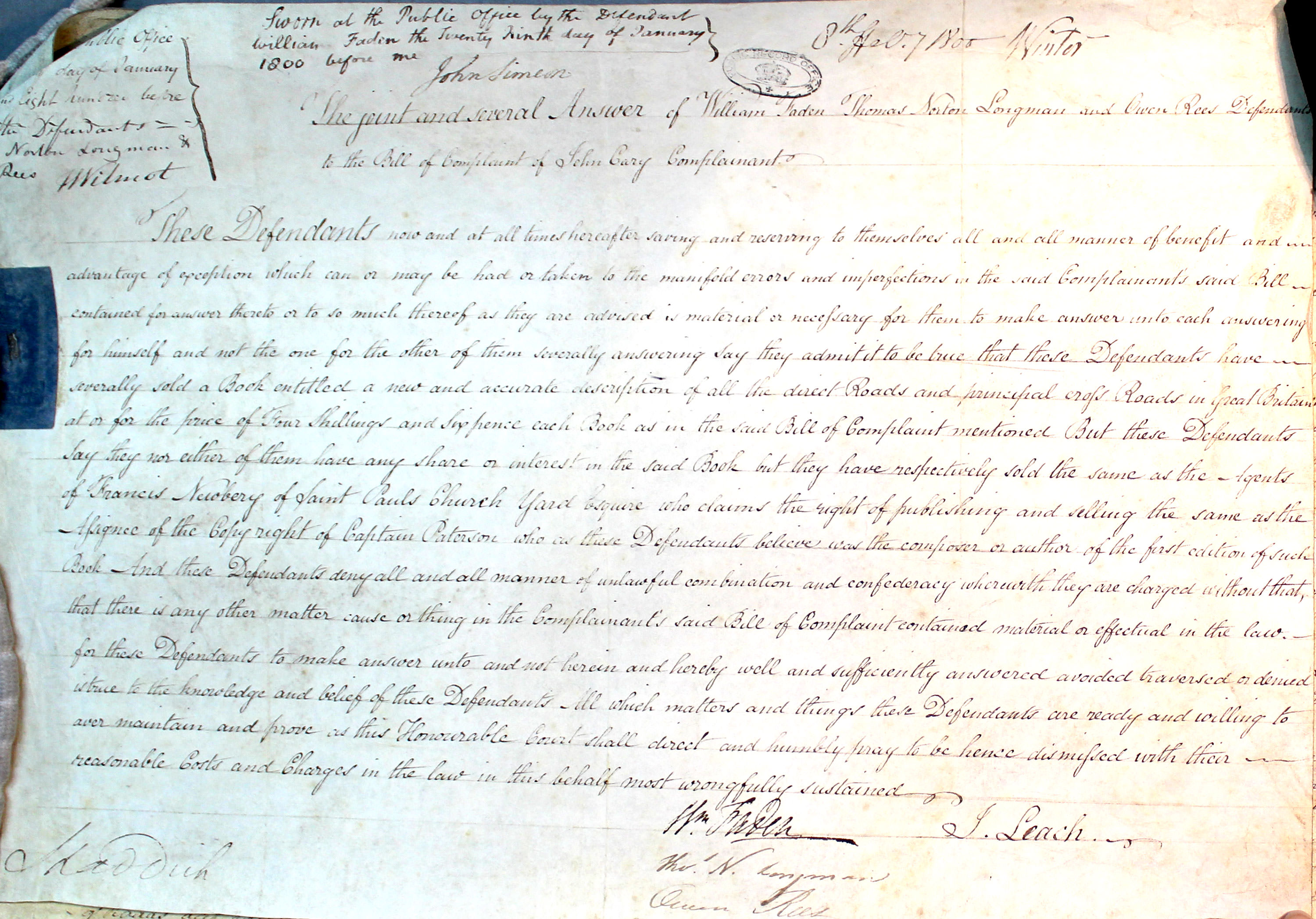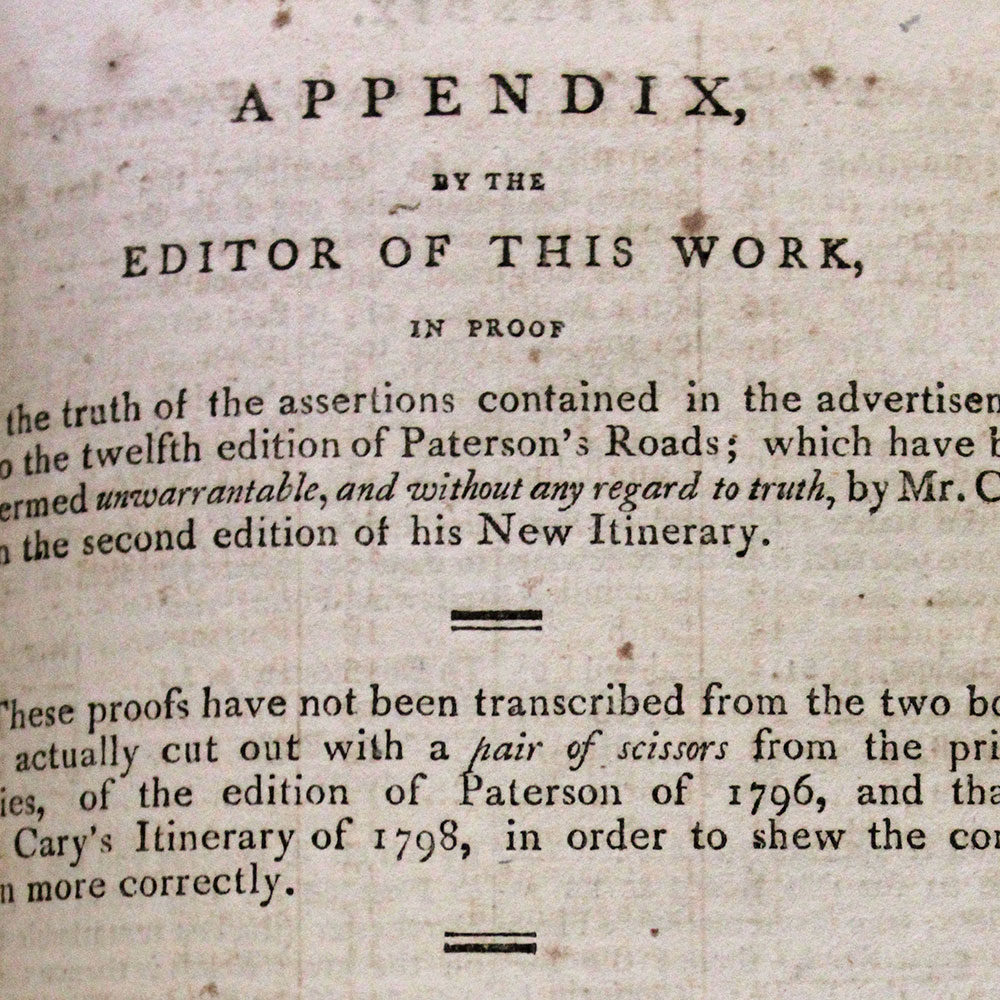This was the second case involving the copyright in Paterson’s Roads, and was an action by John Cary against a number of printers, publishers, booksellers and cartographers whom he alleged had copied his own road book, Cary’s New Itinerary which he had begun selling in 1798.
Francis Newbery, stepbrother to Thomas Carnan, had inherited the copyright in Paterson’s Roads from Carnan. Once Cary began publishing Cary’s New Itinerary, Newbery accused him of copying the plan and design of Paterson’s Roads. However, rather than commence legal proceedings, he published a new edition of Paterson’s Roads containing material copied from Cary’s New Itinerary. Cary responded by seeking an injunction from the Court of Chancery against Newbry and his printers and publisher, William Faden, and booksellers Thomas Norton Longman and Owen Rees, preventing them from publishing and selling the alleged infringing copy.
The defendants countered that Cary had copied Paterson’s Roads, so flagrantly in fact, that he copied a road that did not even exist. The Court observed that if it was do ‘strict justice’, the appropriate order would be for Paterson’s Roads to be stripped of all material copied from Cary’s New Itinerary, and vice-versa. Instead, the Court did not grant the injunction and allowed the continued publication of both books.
After an apparent failed attempt at striking a deal with Newbery for future publications, Cary then commenced renewed proceedings in the King’s Bench, now against only Newbery, Longman and Rees . Evidence was led suggesting that ‘fractional parts’ were strategically inserted to disguise the infringement. Newbery again responded that Cary’s work was itself a piracy of Paterson’s Roads. Lord Kenyon CJ, charged once again with adjudication, had little difficulty in concluding that Cary’s book had been copied, even though he may have copied parts of it from Paterson’s Roads. However, in recognition of Cary’s own copying, Lord Kenyon CJ only awarded him nominal damages of 1s.
Cary then returned to the Court of Chancery, seeking an injunction and an account of profits from Newbery, Longman and Rees. They all answered that they had ceased selling the 12th edition following the judgment, and Newbery added that he had sustained a loss of £38 12s and 5d, as 4500 of the 10 000 copies he had printed remained unsold. The case did not reach a resolution in the courts but continued in the pages of the parties’ respective publications. In the 12th edition of Paterson’s Roads, Newbery inserted an ‘Advertisement’ accusing Cary of plagiarism, while Cary rebutted the allegations in the 2nd edition of Cary’s New Itinerary and included a transcript of the King’s Bench case as proof. In the 13th edition of Paterson’s Roads, Newbery included an extensive Appendix setting out the alleged incidents of copying in great detail.

















